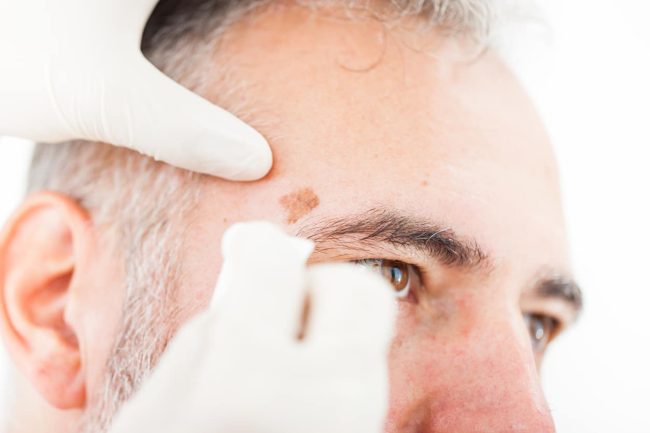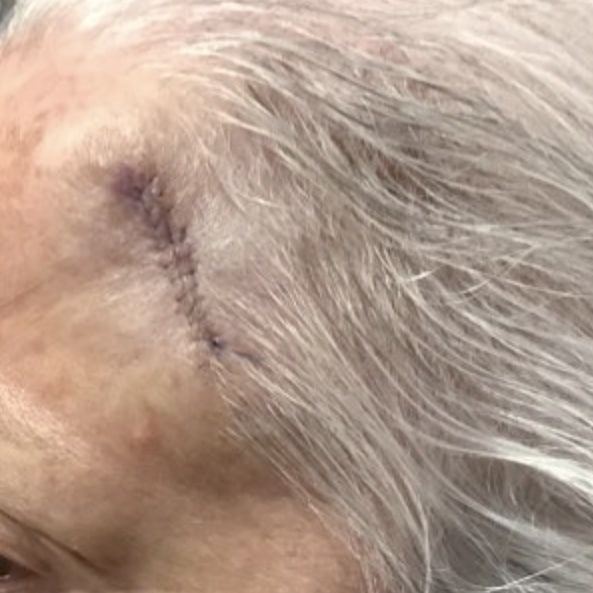Mohs surgery is the gold-standard technique when it comes to skin cancer surgery, especially in key areas like the face. It is the most effective way to treat the most common types of skin cancer including basal cell carcinoma, squamous cell carcinoma, and some forms of melanoma. Here are 7 things you need to know about Mohs surgery for skin cancer.
1. Mohs surgery is an in-office procedure performed using only local anesthesia.
If you’ve been told you need Mohs surgery, the good news is this is a procedure that does not require you to spend time in a hospital or an operating room. Almost all skin cancers that need Mohs surgery can and should be performed in an outpatient setting. This means there is much less risk to the procedure- no risks or complications from general anesthesia.
2. Mohs surgery offers the highest cure rate compared to any other surgical or treatment technique for skin cancers.
Because of the meticulous approach used when removing skin cancer with Mohs surgery, there is a 99% cure rate- the highest of any method of treating skin cancer. Mohs surgery is able to have such a high success rate because the Mohs surgeon examines 100% of the margin of the removed tissue, cell by cell, to ensure no skin cancer remains.
3. Mohs surgery offers the best chance for an ideal cosmetic outcome.
The key principle of Mohs surgery is to remove all of the skin cancer but leave as much normal, healthy tissue as possible. This allows for the smallest defect after skin cancer removal which allows for the smallest possible scar.
In addition, Mohs surgeons who have completed both an American College of Mohs Surgery Fellowship and are board-certified in Mohs Surgery have the most extensive training available in reconstructive techniques to allow for the most elegant closure of the wound. It is important to choose a fellowship-trained and board-certified Mohs surgeon.
Click here to find out if your Mohs surgeon is a fellowship-trained Mohs surgeon.
4. If your biopsy showed skin cancer, but the spot is no longer visible, it is very likely you still need Mohs surgery.
This is a tricky one. Many times after a biopsy the skin heals very well and it may seem like the skin cancer is gone. This is because the face heals better than any other part of the body. Unfortunately, most of the time skin cancer remains just under the surface. The reason this happens is because the new skin that grew over the biopsy site can cover the portion of skin cancer that remained in the skin after the biopsy.
Think of it like this- the biopsy took off the tip of the iceberg, and the iceberg is still there and eventually, the skin cancer will again appear. Some very superficial skin cancers, like small squamous cell carcinoma in-situs, can be removed after just a biopsy, but without Mohs surgery, there is no definitive proof all the skin cancer has been removed.
5. Music during Mohs surgery lowers anxiety
Having Mohs surgery can be a stressful event, but another benefit of having a procedure under local anesthesia is being awake. What we’ve found over the years is that music helps reduce. Multiple studies have shown that listening to music significantly reduces anxiety levels, across all ages.
Taking it one step further, another study found that listening to the music of your choice may even be better. In our office, each room is equipped to hear whatever music the patient selects. Just be careful, if you don’t put in your request, you may be subjected to our favorite default: country music!
6. Mohs surgery is a great way to get through your favorite book or catch up on emails
As you know by now, one of the reasons Mohs surgery is the most sought-out and effective treatment for skin cancer is because of its high cure rate and meticulous approach. This approach can take a decent amount of time.
The actual removal of the layer of skin containing skin cancer is not a time-intensive process, usually 5-10 minutes. However, the tissue analysis on the back end in the Mohs laboratory is a precise, multi-step process. This process can take anywhere from 20-45 minutes depending on the size of the tissue.
The Mohs surgeon will then look at your slides under the microscope to check each margin cell-by-cell to carefully look for any sign of tumor. It’s during this waiting time that you are free, with your impressive bandage, to catch up on emails, read a book, or reminisce with your family member in the waiting room.
7. The face heals better than any other part of the body
Understandably, people are very concerned about skin cancer on the face, which is the most common location for skin cancer. Dr. Mark Abdelmalek said, “I often tell patients, the bad news is the skin cancer is on your face, but the good news is the skin cancer is on your face.” This is because the face heals better than any other part of the body.
The key to proper healing is a good surgical technique, proper design of a surgical repair, and good blood flow. The face has the richest, most robust blood supply of anywhere on the body. And that means scars on the face heal better than any other part of the body.
Scars can take a full year to mature. The goal of Mohs surgery on the face is to have a barely perceptible scar. Unfortunately with some skin cancers, this is not always possible and there are other techniques and scar management approaches that can help.





